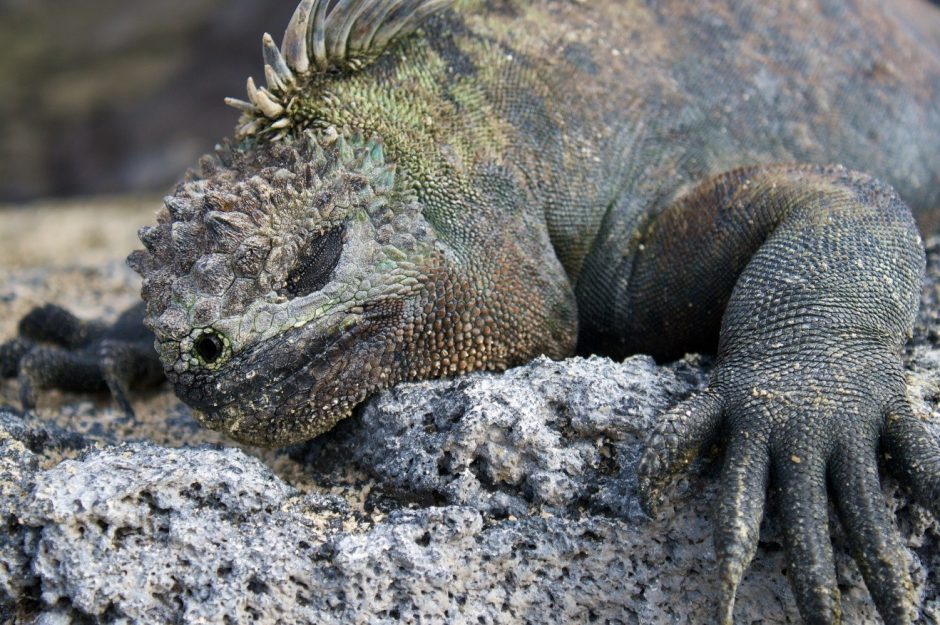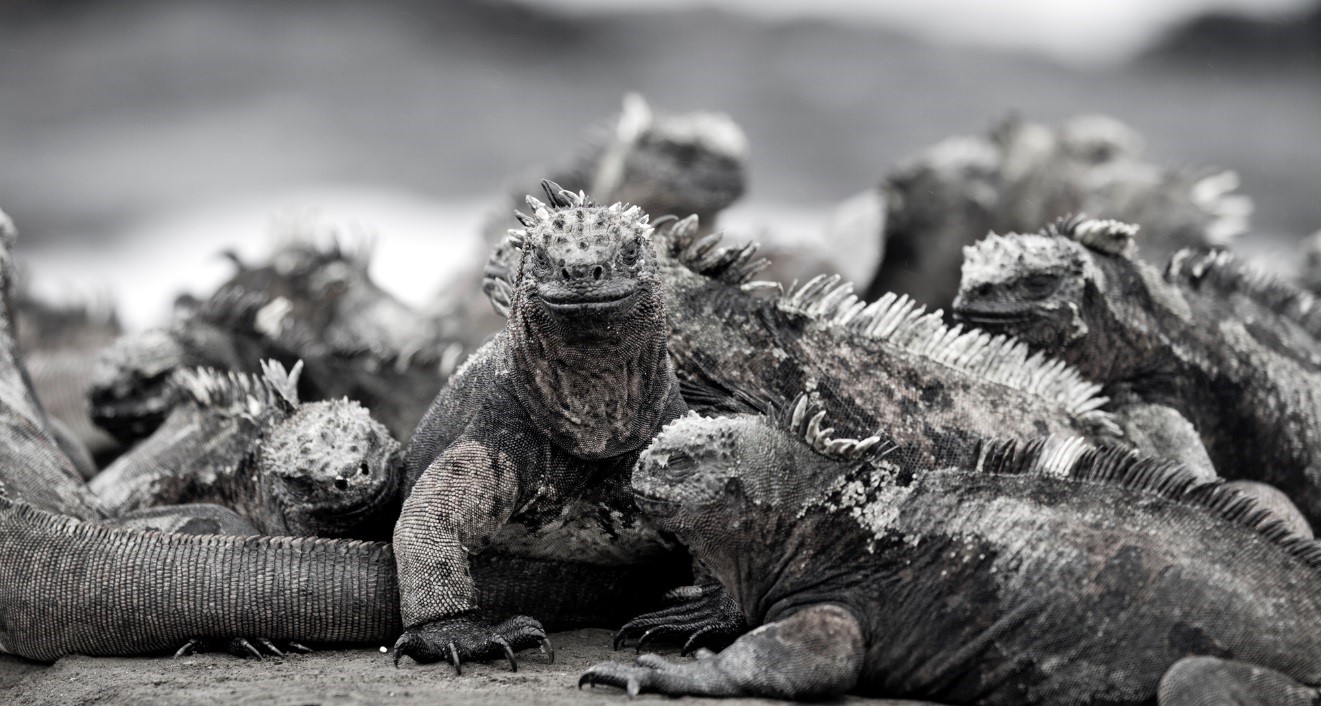
4 Tips on Photographing Marine Iguanas in the Galapagos Islands
Although the Giant Tortoise often steals the title of most symbolic reptile of the Galapagos Islands, Marine Iguanas are certainly the most photographed, as they are absolutely everywhere! If you are dreaming of heading to the Galapagos, or are planning a Galapagos photo trip in the future, start thinking about all the ways to photograph these amazing creatures, from capturing their unique behavior, lifestyle, and of course that sensational prehistoric look at such close range.
Think ahead for Black and White Photography

With modern day digital photography and photo editing software, it’s easy to convert your color photograph to a black and white one. Marine iguanas lend themselves particularly well to this, as they are naturally very contrasting in color with dark darks and light lights and lots of interesting textures.
However, while you don’t need to take the photo in black and white, it does help to visualize the photo as a black and white photo as you’re taking it. Subtle nuances in color, how light bounces off of surfaces, and other details can be maximized to make a very compelling black and white photo.
Show volume with interesting composition and cropping

The great thing about modern photography is that we’re no longer limited to 4×6 prints, or other aspect ratios that depend upon limitations from printers. Not only are the major photo printing companies about to print just about any size photo, but so much of what we do with our photos is digital. This means that cropping your photo to what would normally be considered “panoramic” is feasible for any photo at all.
One of the most amazing things about marine iguanas is when they bask in extraordinary densities. While taking a zoomed-out photo of the entire pile is nice, oftentimes the best way to show the impressive density is to fill the frame with the iguanas. That is, wall to wall iguanas!
When taking your photo, don’t fret if you can’t fill the frame in your camera…keep in mind that creative cropping of the photo after the fact, on your computer, can still yield great results like the above photo.
Capture that “stoic” look, and maybe even with a Lava Lizard Perching!

Arguably one of my favorite photos of marine iguanas in the Galapagos Islands, the above photo is not necessarily a common sight, but it is often seen, despite how odd it is for an entirely different species to be using another species as a fence post, it actually does happen.
If you’re aiming to capture a photo like the one above, take some time whenever and wherever you see piles of marine iguanas to scan. If you’re lucky, you may spot a small lava lizard just like the one above sitting on the head of it’s larger reptile cousin and get the shot of the trip! Set your camera on “portrait mode” or a shallow-ish depth of field (f/4 – 5.6) to make that nice background blur.
Get close and show that incredible texture

Perhaps the most fascinating thing about the Galapagos Islands is the relative indifference that the animals have toward humans. Having never evolved with predators, they have almost no fear or hesitancy, even when a photographer is only a few feet away.
As a photographer, this is a dream come true, as you don’t need a super long telephoto lens or a point and shoot camera with incredibly long zoom capabilities to get the shot of a lifetime. In fact, sometimes you can even shoot “macro” shots that enable you to capture all that intricate detail, whether it be the skin of a marine iguana, a layer of shells on a secluded beach, or the leathery skin of a Galapagos Tortoise.
Now, it’s time to get out there and photograph some of the Galapagos’ spectacular wildlife. Hopefully these tips and tricks will help you return with some show stopping photos of what I consider to be one of the most photogenic species.
Go forward and give it a shot!
Court
Leave a reply